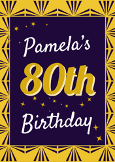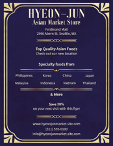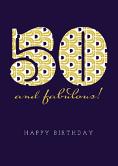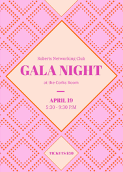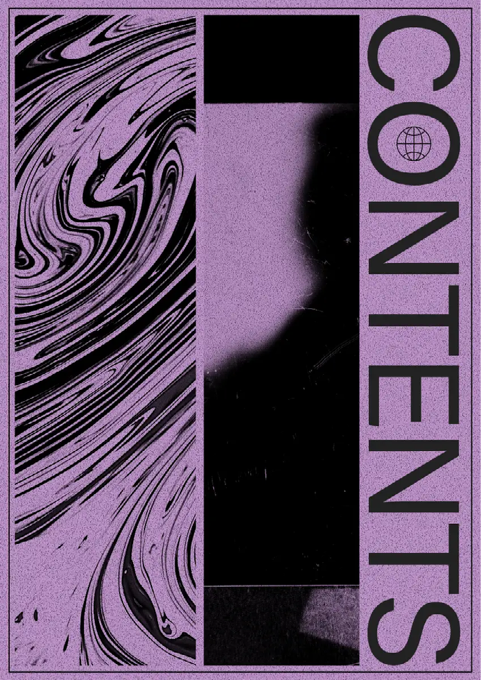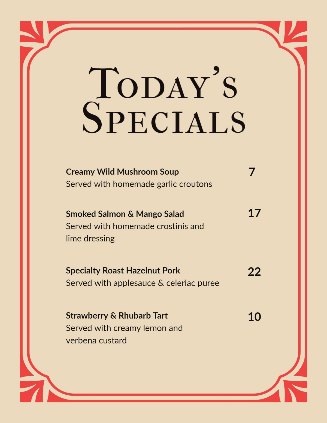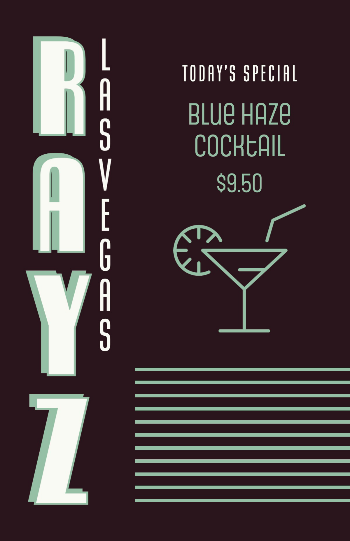All about Art Deco and how to use it in your designs.

Summary/Overview
What is Art Deco?
Art Deco is a style of visual art that began in France in the early 20th century. The style originated in Paris during the period between the two world wars - influencing art, architecture, fashion and furniture design. It then exploded in popularity throughout the world.
Technically, the term Art Deco stands for ‘Arts Décoratifs’, brought to life by artists such as Francois Pompon, Aleksandra Ekster, and Jean Dupas.
Explore the style elements of Art Deco design and find inspiration and tips on how to use it as a part of your own creative projects in our guide. You’ll also find free Art Deco templates for you to customise. Check out some of our favourites on Adobe Express below.
Key characteristics of Art Deco design.
Some of the best examples of Art Deco characteristics can be found in the architecture from the period. Buildings like Battersea Power Station in London and the Midland Hotel in Morecambe, are all perfect examples of the Art Deco style.
Elsewhere in the world, the Empire State Building and Rockefeller Center both exhibit key characteristics of Art Deco design. Think aerodynamic curves, layered shapes and metallic colours, which are typical of the era.
More generally, Art Deco patterns are rooted in the artists’ appreciation of machine-made objects and modernity. Prints and patterns tend to be simplistic, with an emphasis on symmetry.
Here are some of the main characteristics to include when making an Art Deco-inspired design:
- Symmetrical patterns
- Geometric shapes
- Use of layers
- Clean, straight lines
- Striking colours with accents and contrasts.
Tips for creating Art Deco posters, cards and invites with Adobe Express.
Want to make your own Art Deco creation? Whether you’re creating flyers, invites or a new brand logo, learn how to incorporate Art Deco designs into your work with these tips and tools.
Keep your lines sharp and smooth.
It can be easy to overcomplicate your poster or flyer with overlapping patterns and shapes, which can end up taking away from the main message. Instead, try to ensure your Art Deco patterns use sharp and smooth lines.
Clean lines can help you get the message across clearly in your posters in a ‘KISS’ way – keep it simple, stupid. Simple, focused design cuts through the clutter and noise, while grabbing the attention of the target audience.
Try to keep things symmetrical.
You can see symmetry throughout nature, so why not use it in your own designs? A symmetrical pattern or background can help draw attention to your message.
Create elegant greeting cards with precise Art Deco designs using our templates and wow your loved ones. Combine a thoughtful message with a symmetrical pattern to complement their home interior and make them smile. Your Art Deco card is sure to stand out from generic ones on the mantlepiece.
Look for ways to weave in metallic tones.
Art Deco designs often feature metallic colours – the original artists were inspired by modern machinery, after all. Not only do these tones add a subtle contrast for party invites and posters, but they can also work well in marketing materials too.
Blend these gold, silver and platinum shades into your company flyers or logos to reflect your brand’s maturity. It’s a simple way to bring that Art Deco elegance into your designs.
Use architecture and film for inspiration.
Architecture, illustrations and films inspired by or made during the Art Deco era can help pique your creativity.
The 1991 film, The Rocketeer, is a great place to start. Every inch of the film is inspired by Art Deco design, from the poster to the costumes and sets. You can also browse covers from old copies of Vogue and Vanity Fair to get a feel for the original 1920s’ illustrations.
And if you’re looking for more architectural examples, check out some of the 20th-century buildings in the UK. The Hoover Building in London or the Daily Express building in Manchester are perfect examples.
Go big and bold with your use of fonts.
Be bold and reap the rewards. In the world of hyperabundant messaging, getting people’s attention these days isn’t always easy. Using big and bold Art Deco fonts in your social media posts can help you to stand out. This, mixed with a short but sweet caption, can strike a pose and stand out in a crowded online marketplace.
Art Deco colours and patterns.
Art Deco artists love to make use of rich colour types, with sharp contrasts. The use of gold in Art Deco buildings is a sign of those times, an expression of the wealth generated by the booming industries of the early 20th century.
But what might this look like in your own posters and flyers? Think black lettering on a creamy white background, or gold lines set against a deep navy. Other popular colours from the era include:
- Emerald green
- Canary yellow
- Royal purple
- Charcoal grey
- Silver or steel tones
- Gold and brass tones
- Antique copper
- Neutral creams and beiges.
When it comes to Art Deco patterns, you can expect a similar level of modern opulence. Big sideboards, armoires, and accent chairs featured heavily during the height of the Art Deco movement. Each came with their own statement pattern, from zig zags to sunburst motifs. Chevrons, stepped patterns and geometric shapes are also key features in Art Deco design – though ideally you wouldn’t use them all together.
Test out how each one works with the other to see how it would fit best in your creation.
Examples of Art Deco fonts.
Art Deco fonts constitute elements of elegance, symmetry and parallel lines. Using them almost feels like something out of The Great Gatsby or Casablanca.
You’ll find that most fonts are written in all-caps, to showcase just how decorative the lettering is. Examples of Art Deco-style fonts include:
Why not use one of these fonts to create your very own Art Deco masterpiece?
How to use Art Deco design in your small business.
There are many ways to use elements of Art Deco in your product design, advertising campaigns and more. Bold lines, geometric shapes and rich colour palettes can help make your branding and packaging more eye-catching – and if your business has a vintage feel, then this blend of old and new can enhance that subtle elegance.
So how can you do this?
- Incorporate Art Deco patterns into your logo for a vintage effecting.
- Make the most of vintage borders on your menus, posters or flyers.
- Add metallic accents and Art Deco fonts to your product packaging.
- Play around with symmetry for a more balanced design.
You can also utilise art deco in retail spaces to draw customers in – it’s all part of the image. Got a small artisan food stall, or a boutique cosmetics business? Add vintage flair to your brand image with Art Deco design.
Useful things to know.
When was the Art Deco period?
The Art Deco period was from 1919 to 1939. This represented the era after the First World War, and before the Second World War. It was a time of artistic experimentation, with movements such as Bauhaus, Constructivism, and Cubism helping to play their part in shaping the style.
Was Art Deco before Art Nouveau?
No, Art Nouveau came before Art Deco. Art Nouveau covers the period from around 1880 to 1914. Both represent unique time periods, the world being a very different place in both. They each saw global change on every level and the designs of these styles reflect that change.
Who created Art Deco?
Charles-Édouard Jeanneret-Gris, otherwise known as ‘Le Corbusier’ coined the term ‘Art Deco’. He wasn’t the biggest proponent of decorative arts, but his works had a large amount of modernist aesthetics which made him synonymous with the term.
